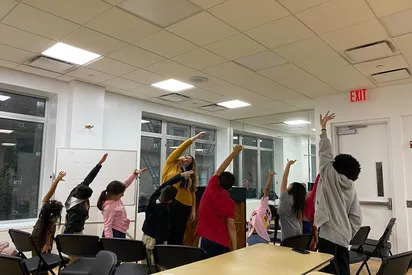New York Immigrants Strive for Safer Better Paying Jobs But Digital Skills Remain a Major Barrier
Learning Technology in Everyday Life
In a small house in the Parkchester neighborhood of the Bronx, seven Bangladeshi women gathered around a table earlier this month. Their challenge was simple but new—figuring out how to mute themselves on Zoom. For many, it was the very first time using the video conferencing platform.
Their instructor patiently guided them, switching between Bengali and English as he explained the importance of staying muted until it was their turn to speak. For these women, this was more than a technology lesson—it was a step into a world that could open new doors for safer and better opportunities.
Building Digital Foundations
A local nonprofit is offering classes designed specifically to empower immigrant women by teaching them digital basics. The sessions include how to set up a Gmail account, send attachments, schedule reminders on a calendar, and navigate Zoom. Some women are applying spreadsheet formulas to manage small catering businesses, while others are using Zoom to connect with family members across the country.
Advocates believe that acquiring digital skills can help immigrants in multiple ways—from finding higher-paying work and applying for benefits online to staying connected with schools and health providers. Yet despite the growing demand, programs dedicated to digital literacy remain limited, especially for immigrant communities that face language barriers and often work in informal jobs.
Technology as a Path to Independence
For many immigrant workers, technology is becoming a powerful tool to gain confidence in the workplace. With translation apps, they can now communicate more effectively with employers. Access to GPS tools helps them travel safely to jobs without fear of getting lost. Others are even learning to use modern AI tools to craft professional messages for employers, ensuring they present themselves confidently.
Instructors say these seemingly small skills translate into big changes—helping workers negotiate fair wages, find work online instead of depending solely on word of mouth, and build more independence in their daily lives.
Growing Demand for Digital Classes
The Bronx-based program currently offers three levels of computer courses, and demand continues to rise. Dozens of students are already on a waiting list for the next advanced level. Since the program began in 2019, hundreds have successfully graduated, gaining skills that make everyday life smoother.
From scheduling doctor’s appointments on medical portals to searching for food pantries or buying tickets online for family outings, students say these new skills provide more freedom and ease in their daily routines.
Bridging the Digital Divide
Experts stress that while many resources in the city focus on advanced computing or coding classes, the real gap lies in basic digital literacy. Without confidence in simple computer use, many residents are unable to take advantage of advanced training opportunities. This lack of access is particularly noticeable in neighborhoods with lower broadband connectivity and fewer households equipped with computers.
The call for a broader continuum of technology education is growing, ensuring that residents at every level—from beginners to advanced learners—can benefit from digital inclusion.
Reducing Isolation and Strengthening Bonds
Beyond professional growth, digital access also reduces feelings of isolation for many immigrants who are far from their families. For example, a 52-year-old woman who recently completed the training now uses Zoom every day to speak with her daughters studying in different states. For her, the computer is no longer a source of confusion but a bridge to her family.
A Step Toward Safer and Better Futures
For immigrant communities across New York, mastering digital skills is more than learning how to type or send an email. It is about empowerment, independence, and the chance to secure safer and better-paying work. With growing demand for such training, the push to close the digital divide has never been more urgent.
